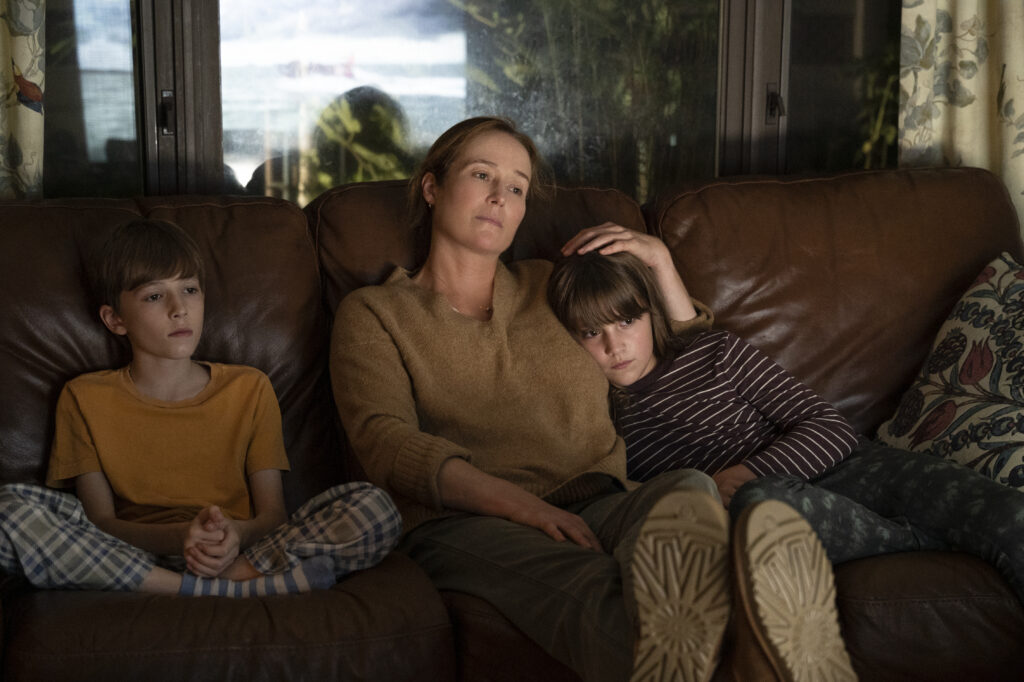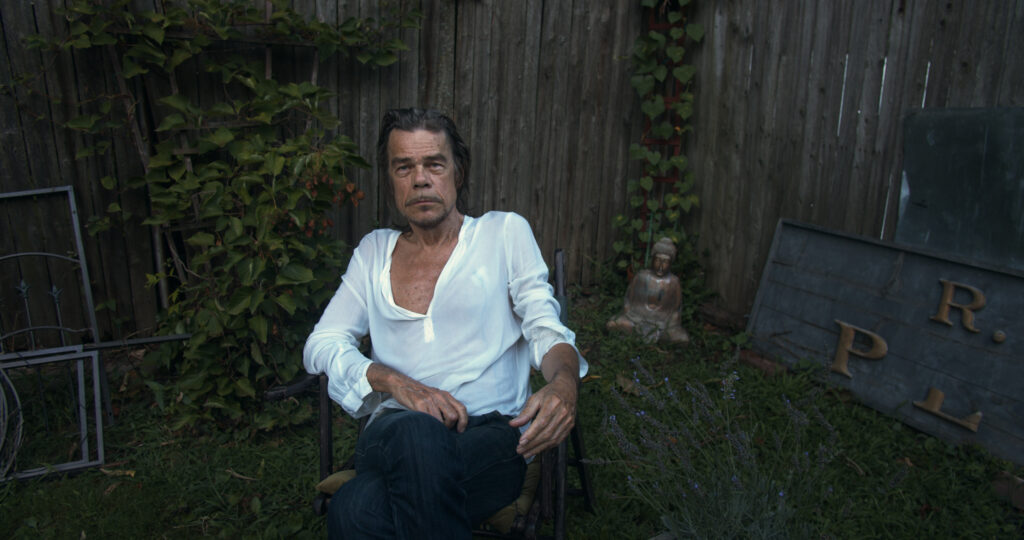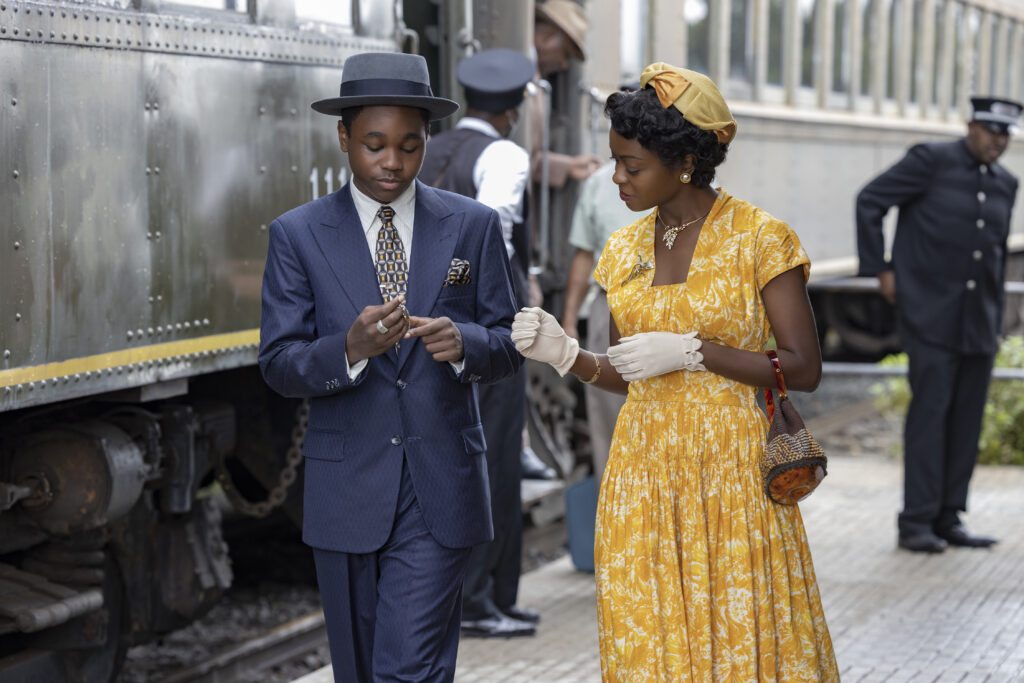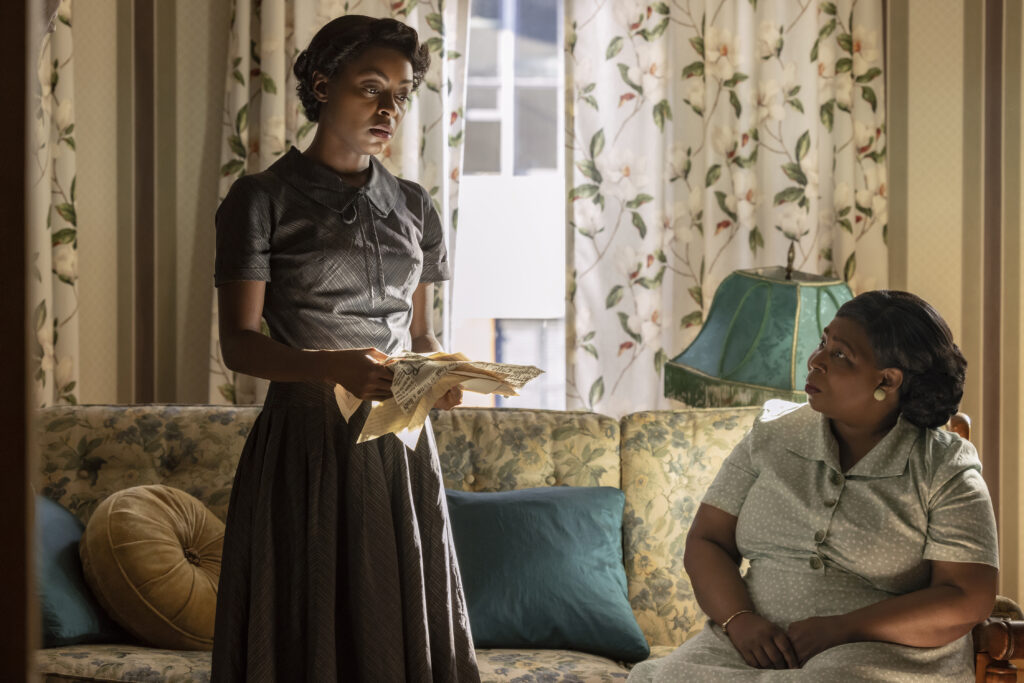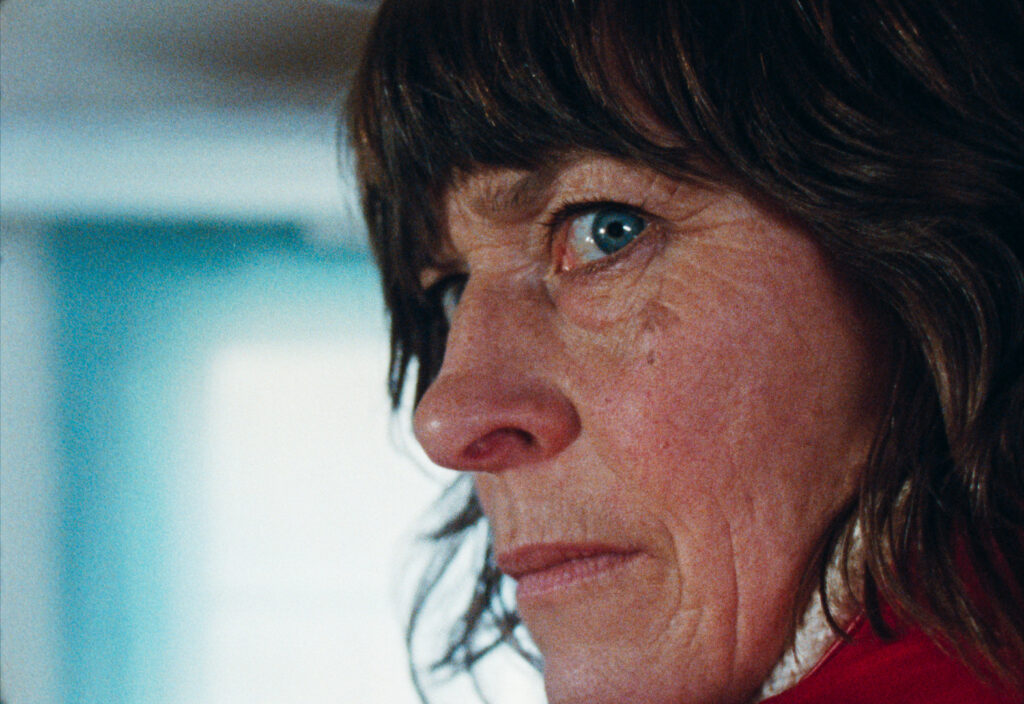October 16, 2022
by Carla Hay

Directed by Sierra Pettengill
Culture Representation: The documentary film “Riotsville, USA” features archival footage of white and African American people discussing how the U.S. government reacted to civil unrest in the 1960s, including the creation of mock cities on military bases to do riot drills.
Culture Clash: Many people believe that these government initiatives were created specifically to oppress civil rights activists, especially African Americans speaking out against systemic racism.
Culture Audience: “Riotsville, USA” will appeal mainly to people who are interested in civil rights history from the 1960s, but the movie has a tendency to give preference to politically left-wing viewpoints instead of having a more balanced variety of political perspectives.

The archival documentary “Riotsville, USA” presents fascinating footage (the movie’s best asset), but the movie’s narration tends to be politically biased and preachy. Viewers can make up their own minds without being told what to think about the footage. At the very least, “Riotsville, USA” succeeds in its purpose to take a closer look at why the U.S. government reacted to the civil rights movement of the 1960s by building mock cities on military bases so that military and law enforcement could be trained on how to handle riots. A common nickname for such a mock city was Riotsville.
Directed by Sierra Pettengill, “Riotsville, USA” starts out strong in the first half of the movie, and then it becomes somewhat of a rambling compilation in the second half that presents a lot of left-wing talking points. The documentary has constant voiceover narration by Charlene Modeste from a screenplay written by Tobi Haslett. And although an archival documentary’s narration can be beneficial to put a lot of the footage in historical context, the narration of “Riotsville, USA” becomes a detriment when it forces a political bias (progressive liberal) perspective into the narration. It comes across as looking like the “Riotsville USA” filmmakers expected all viewers to automatically agree with this perspective just by watching this movie.
“Riotsville, USA” has no exclusive and new interviews with anyone giving “hindsight” perspectives, and yet the movie attempts to draw a throughline from the archival 1960s footage to 21st century civil unrest in the United States. The voiceover narration is the only “contemporary voice” heard in the movie, and that voice offers just one point of view. Therefore, “Riotsville, USA” (which had its world premiere at the 2022 Sundance Film Festival) looks exactly like what it is: a documentary that has a lot of meaningful archival footage but not enough contemporary perspectives.
“Riotsville, USA” opens with this background information on a title card: “This film consists of archival material from the late 1960s. All of the footage was created for broadcast television by the U.S. military.” In other words, because it was footage made by the U.S. government, the public has the right to access it under the Freedom of Information Act.
In the begnning of “Riotsville, USA,” the voiceover narration has this to say about the U.S. civil rights movement: “A door sprung open in the late 1960s and someone, something sprang up, and slammed it shut. Nothing that big, that bright, had ever happened. And in so many American cities, nothing so fierce or hard to grasp. The riots blew the roof off daily life.”
The movie then goes on to cite, as examples, the “riots” or “citizen uprisings” (depending on how you want to describe these events) in the Los Angeles neighborhood of Watts in 1965; Chicago in 1966; and Newark, New Jersey, in 1967. Detroit and many other cities had this type of society unrest in the mid-to-late 1960s. What all of these violent events had in common were discontent over racial inequalities and white supremacist oppression in America.
In July 1967, then-U.S. president Lyndon B. Johnson (a moderate Democrat) announced the formation of the National Advisory Commission on Civil Disorders, also known as the Kerner Commission, whose members (all prominent politicians or other civic leaders) were appointed by Johnson. Otto Kerner Jr., who was governor of Illinois at the time, was named the commission chairman. The 11-member commission consisted of nine white men, one African American man and one white woman.
The commission’s purpose was to investigate why many civil rights protests in the U.S. were devolving into racial violence, even though a prominent civils-rights leader such as Dr. Martin Luther King Jr. preached non-violence. The narration in “Riotsville, USA” offers this explanation: “The people took revenge on the cities that confined them—retribution for a history of containment and contempt.” The narration then goes on to say, “Johnson wanted the Kerner Commission to substantiate his belief that many of the riots were incited by outside agitators.”
“Riotsville, USA” has news footage of a group of unidentified men and women (white and black) being interviewed about this commission to get the “ordinary citizen” perspective. The white men who are interviewed seem to be the most supportive of the commission, while the women (of both races) and the black men are a little more hesitant or skeptical. When asked what he thinks about the commission, a middle-aged African American man pauses, as if he’s knows that he has to be careful of what he’s going to say on camera, and replies (not very convincingly) that he thinks it’s a good idea. An African American woman, who appears to be his wife or companion, is more forthright with her opinion: “My greatest concern is, “Have we asked the people who are in need of the program what their needs might be?'”
Around the same time that this commission was doing its investigation, the U.S. military had been setting up mock Riotsville cities on military bases. “Riotsville, USA” shows some 1967 footage from one of these riot drills at Fort Belvoir in Virginia. Other parts of the movie shows footage from other riot drills at other military bases. The audiences attending these drills were usually members of the military and officials from other members of the government, who watched the drills like they were watching a spectator sport.
These drills, with members of the military playing different roles, usually had the same predictability: Protestors (all men) shouting protest clichés, being rowdy, pretending to loot stores, and committing other crimes—and then being defeated and arrested by those in the roles of the military or the police. There weren’t enough black people involved in this role playing, so many of the white “actors” were cast as black people. A few even showed up in “black face” in order to pretend to be black, which would be considered a lot more racially offensive today than it was back in 1967.
In February 1968, the commission’s study was published in “Report of the National Advisory Commission on Civil Disorders,” also known as the Kerner Report, which went on sale to the public and became a bestseller. The report came to this conclusion, as quoted in the documentary: “The U.S. is moving into two societies—one white, one black—separate but unequal.” The year 1968 was also pivotal and tragic in U.S. civil rights history because it was the year that civil rights leader King and Robert F. Kennedy (who was a U.S. presidential candidate at the time) were assassinated.
“Riotsville USA” then turns to a lot of footage from “Public Broadcast Laboratory,” a public-affairs news/talk show on National Education Television, which was the U.S. TV network that was the predecessor to PBS (Public Broadcasting Service). One of the archival interviews shows a lively “Public Broadcast Laboratory” interview with civil rights activists Dr. Kenneth Clark, Bayard Rustin and Charles Hamilton. There’s also some footage from the show of Jimmy Collier and Frederick Douglass Kirkpatrick performing their 1969 song “Burn, Baby, Burn.”
The documentary also mentions that Republican lawmakers often complained that “Public Broadcast Laboratory” had too much of a liberal bias, but the documentary fails to mention what “Public Broadcast Laboratory’s” response was to this criticism. The show’s footage that was chosen focuses strictly on African American civil rights leaders talking about race relations in America. It’s mentioned in the documentary that “Public Broadcast Laboratory” was cancelled in 1969, after the Ford Foundation withdrew funding for the show.
The “Riotsville, USA” narration points out: “At the end of the Kerner Commission’s report, there was an addendum titled ‘Supplement on the Control of Disorder.’ Its recommendations were the only parts of the report that Congress would ever implement … In 1968, Congress created the Law Enforcement Assistance Administration.”
In April 1968, the Civil Rights Act of 1968 was signed. It includes the Anti-Riot Act, which makes “travel in interstate commerce … with the intent to incite, promote, encourage, participate in and carry on a riot.” The April 1968 assassination of King resulted in protests and riots in many big U.S. cities, including Chicago. “Riotsville, USA” has a brief TV interview clip of then-Chicago mayor Richard J. Daley saying that the Riotsville simulations were helpful in training Chicago law enforcement on how to deal with the riots.
The civil unrest during the 1968 Republican National Convention in Miami also stemmed from racial issues. Much of the unrest was in Miami’s mostly black neighborhood of Liberty City, where protests by mostly young black people were happening at the same time as the Republican National Convention. According to “Riotsville, USA” NBC News incorrectly reported that the reason for the protests were that the protesters were unhappy about there being a small number of black delegates at the convention.
However, archival footage shows that the main reason for the protests were that demands weren’t being met for Liberty City to controlled by more black people. These demands included better programs for poor people, a guaranteed income (in other words, a higher minimum wage), and more black police officers and more black firefighters in Liberty City.
Miami officials had promised to meet with Liberty City leaders but failed to show up for the meeting. And so, the riots began. Reverend Theodore Gibson, a civil rights leader, is seen in archival footage commenting on this political snub: “You can’t lie to people forever and get away with it.”
The documentary also includes unsettling footage of the chaos in the Liberty City streets, where violence and fires were breaking out. An unidentified white man who was driving on one of the streets had a car with a George Wallace (conservative Republican politician) bumper sticker on the car. The car was vandalized, and the man was almost brutally attacked until he helped to safety by some compassionate black people. Police and the National Guard later responded to the riots with tear gas and brutality.
Bob Reed, an African American TV journalist who was on the scene for Channel 4 News in Miami, is shown being interviewed by a Channel 4 colleague about why Reed thinks the riots happened. He replies, “Pent-up anger, frustration, the idea of being trapped in society. It’s a bursting out, a breaking free. It’s just a way of saying, ‘I will accept the abuse no longer.'”
“Riotsville USA” would have been a better documentary if its editing had better storytelling. Much of the documentary is just archival footage strung together with a one-note narration of how the U.S. government came up with tactics to crack down on violent protests. And frankly, none of it is shocking, although “Riotsville USA” wants to act like it’s more shocking than it really is.
And without diverse political viewpoints, “Riotsville, USA” seems like a very one-sided exercise in trying to stir up political outrage over facts that are decades old. There isn’t a lot of information given about the Riotsville simulations that inspired the title of this documentary, other than to show the footage of these simulations. However, there’s enough overall archival information in “Riotsville, USA” to serve as a valuable history lesson and a reminder that many of the problems that resulted in protests in America in the late 1960s are problems that still result in protests today.
Magnolia Pictures released “Riotsville, USA” in select U.S. cinemas, on digital and VOD on September 16, 2022.




